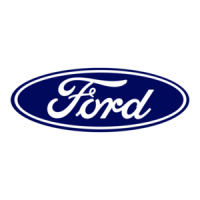
Do you have a question about the Ford 2012 Escape and is the answer not in the manual?
| Brand | Ford |
|---|---|
| Model | 2012 Escape |
| Category | Automobile |
| Language | English |
Explains various warning lights and indicator chimes.
Details on the vehicle's gauges like speedometer and tachometer.
Information on the vehicle's message center display and functions.
Operation of the AM/FM radio, CD, and MP3 player.
Connecting portable audio devices via the auxiliary input jack.
Using the vehicle's USB port for media playback and charging.
Information on SIRIUS satellite radio service and reception.
Operation of the vehicle's navigation system.
Features and operation of the SYNC voice-activated system.
Controls for manual climate control system.
Operation of the dual-zone automatic climate control.
How to use and operate the rear window defroster.
Operation of headlamps, including autolamp and delay features.
How to use turn signals and hazard flashers.
Instructions for replacing various vehicle bulbs.
Operation of windshield wipers and washers.
How to adjust the steering wheel for comfort and safety.
Operation of power windows and window lock features.
Adjustment and features of interior and exterior mirrors.
How to use and set the cruise control system.
Operation and features of the moon roof.
Details about integrated keyhead transmitters and their functions.
Programming and features of the MyKey system for restricted driving.
Controls for locking and unlocking vehicle doors.
Automatic locking feature for doors, liftgate, and window.
Using the keyless entry keypad for programming and functions.
How the anti-theft system immobilizes the engine.
Understanding the anti-theft indicator light in the instrument cluster.
Precautions and adjustments for front seats.
Operation and adjustment of front row adjustable head restraints.
Important warnings and guidelines for using the safety belt system.
Information on the airbag system and important safety precautions.
Guidelines for proper use of child safety restraints.
Steps for installing child seats with vehicle belts.
When and how to use booster seats for children.
Special considerations for utility vehicles and trucks.
How SUVs and trucks differ from other vehicles.
How to inspect tires for wear, damage, and maintain them.
How the TPMS works and its warning indicators.
Guidelines for properly loading the vehicle and trailer.
Guidelines and precautions for towing a trailer.
Procedures and precautions for starting the engine.
How the ABS system works and its warnings.
Explanation of the AdvanceTrac with RSC system.
System to detect and mitigate trailer sway.
Information on the electric power-assisted steering system.
Safety checks and precautions before driving.
How the automatic transmission operates.
How to operate the manual transmission.
How the reverse sensing system warns of obstacles.
How the rearview camera system assists in parking.
How the active park assist system helps park the vehicle.
How to get roadside assistance in the U.S.
Operation of the hazard flasher system.
How to reset the fuel pump shut-off switch after an impact.
Information on vehicle fuses and relays.
Procedures and warnings for changing a tire.
Warnings and guidelines for using a dissimilar spare tire.
Correct torque specifications for wheel lug nuts.
How to jump-start a vehicle with a dead battery.
Recommendations for professional towing services.
Conditions and procedures for emergency flat towing.
Guidelines for obtaining warranty and service repairs.
How to find service when traveling away from home.
Steps to take for unresolved questions or concerns.
Information on the BBB Auto Line dispute resolution program.
Information on Canada's CAMVAP mediation/arbitration program.
Advice for exporting vehicles and finding fuel abroad.
Proper methods for washing the vehicle's exterior.
Cleaning and maintaining exterior chrome parts.
How and when to wax the vehicle.
Procedures for repairing paint chips.
How to clean aluminum wheels and covers.
Cleaning the engine compartment.
Cleaning non-painted plastic exterior parts.
Cleaning windshield, windows, and wiper blades.
Cleaning the instrument panel, trim, and cluster lens.
Cleaning fabric, carpets, and seats.
Cleaning and maintaining leather seats.
Guidelines for vehicle servicing and maintenance.
Safety precautions to follow when working on the vehicle.
Procedures for servicing the vehicle with the engine off.
Procedures for servicing the vehicle with the engine running.
Checking and adding engine oil.
Information about the vehicle's battery and its maintenance.
Checking and adding engine coolant.
Information about the integrated lifetime fuel filter.
Important safety precautions when handling automotive fuels.
Guidance on selecting the correct fuel type for the vehicle.
Safety guidelines and procedures for refueling the vehicle.
Tips and techniques for achieving good fuel economy.
How the emission control system works and its maintenance.
Explanation of the OBD-II system for emission control.
How to determine if the vehicle is ready for I/M emissions testing.
Checking and maintaining brake and clutch fluid levels.
Checking automatic transmission fluid levels.
Information on air filter replacement.
Recommendations for storing the vehicle for extended periods.
Details about Ford Custom Accessories and their warranty.
Available exterior styling accessories.
Available interior styling accessories.
Available lifestyle and utility accessories.
Accessories that enhance vehicle security and convenience.
Details on Ford ESP plans available in the U.S.
Overview of the extensive components covered by ESP plans.
Description of the most comprehensive ESP coverage.
Description of the ExtraCare ESP plan.
Description of the BaseCare ESP plan.
Description of the PowertrainCare ESP plan.
Eligibility for rental car reimbursement during covered repairs.
Information on transferring ESP coverage to a new owner.
Benefits of 24/7 roadside assistance included with ESP.
Details on Ford ESP plans available in Canada.
Importance and overview of vehicle maintenance.
Reasons why regular vehicle maintenance is important.
How maintenance protects vehicle value and performance.
List of routine maintenance checks and services.
Maintenance checks that owners can perform.
Intervals for changing engine oil and coolant.
Monthly maintenance checks for owners.
Six-month maintenance checks for owners.
Overview of the multi-point inspection service.
Items included in the recommended multi-point inspection.
Log for tracking normal scheduled maintenance.
How the Intelligent Oil Life Monitor system works.
Examples of vehicle use affecting oil change intervals.
Additional maintenance for specific operating conditions.
Maintenance for towing and carrying loads.
Maintenance for vehicles used in heavy commercial conditions.
Maintenance for vehicles driven in dusty conditions.
Fueling requirements for exclusive E85 use.
Exceptions to the normal maintenance schedule.
Maintenance for rear axles and PTO units.
California-specific fuel filter replacement.
Oil change intervals for vehicles in hot climates.
Replacement intervals for air filters based on conditions.

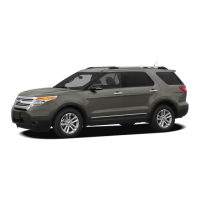
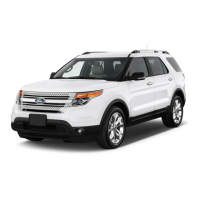



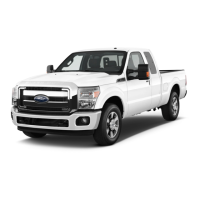



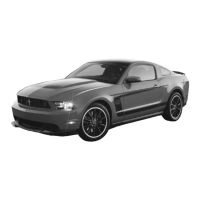
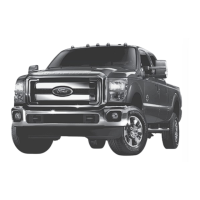
